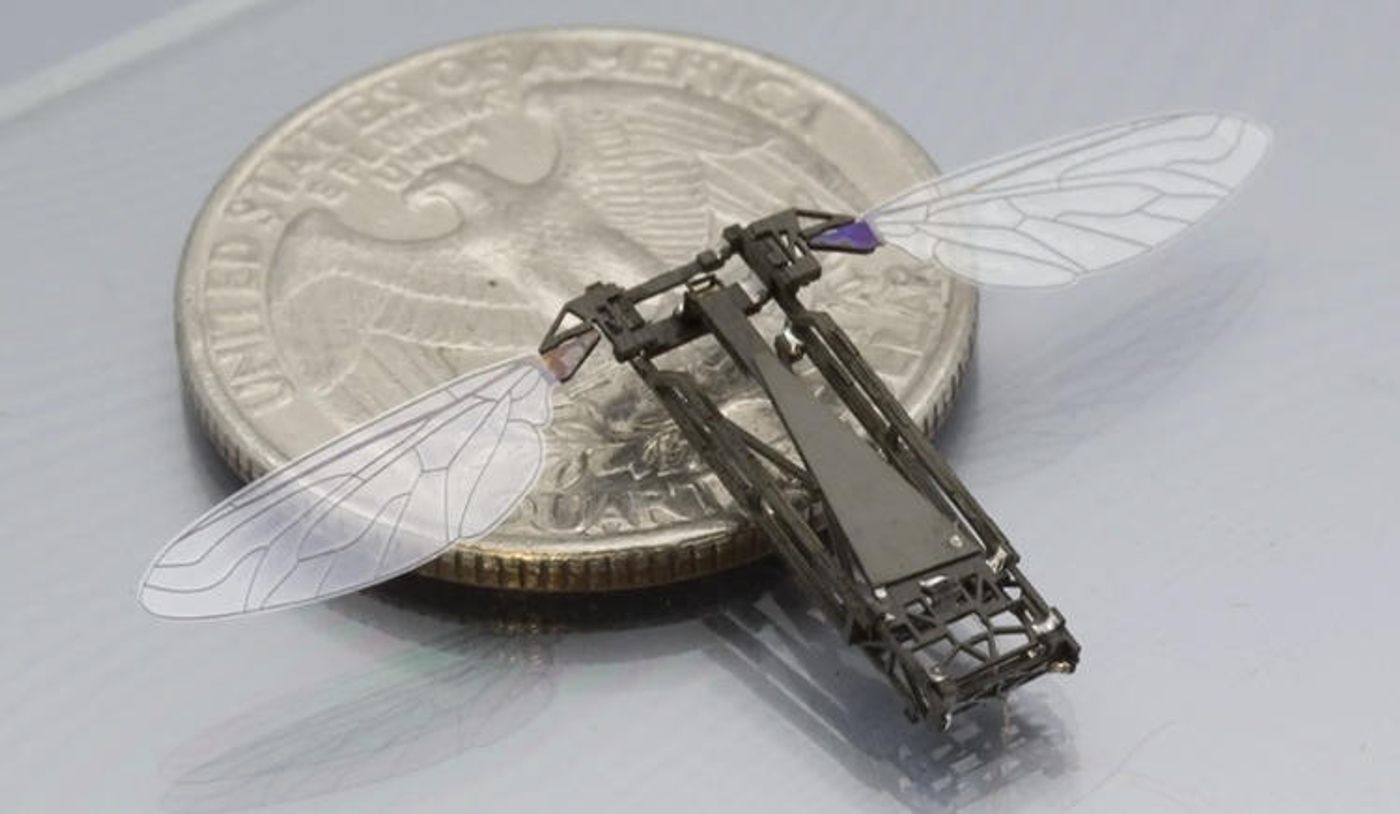This Insect-Sized Robot Can Fly and Swim
One thing that has baffled scientists for years is how to make something capable of gliding through the air and also slicing through the water. Whether it’s a vehicle, a remote-controlled device, or something completely different, it has been difficult to come up with anything due to the fact that the two different capabilities require drastically contrasting qualities.
Despite the struggles, engineers from Harvard University have created the world’s first insect-sized robot that is capable of not only flying, but also swimming under water. The little robot uses a special “flapping” motion that allows it to propel itself through the air, and by modifying the same motion to move a bit slower, it can also move through water. Its design was heavily inspired by a smaller bird known as a puffin, which is known to switch between air and water.

“Through various theoretical, computational and experimental studies, we found that the mechanics of flapping propulsion are actually very similar in air and in water,” said Kevin Chen, a graduate student in the Harvard Microrobotics Lab at SEAS. “In both cases, the wing is moving back and forth. The only difference is the speed at which the wing flaps.”
The little robotic device is being called the RoboBee because of its size. While in the air, the wings flap at about 120 times per second, which allows it to fly. Under water, on the other hand, it only flaps about 9 times per second, but the movement by which the wings flap is essentially the same.
You can see it in action below:
The report details the fact that the RoboBee can easily transition from air to water by simply torpedoing itself from mid-air through the surface tension of the water, but getting the RoboBee from water to air is another challenge that the engineers need to figure out.
Because a lot of propulsion is required to get the RoboBee up out of the water and then back into the air again, the lightweight construction of the current prototype is unable to lift up without breaking something in the wing mechanisms. This is reportedly the next phase in testing and engineering that the engineers would like to focus on.
The RoboBee itself is merely a proof of concept experiment that may help in research towards similar technology being used in vehicles for military, transportation, or even in children’s’ toys. Nonetheless, being the first device of its size to be able to transition from air to water with the same propulsion equipment is a great engineering feat to have been accomplished.
Source: Harvard University








